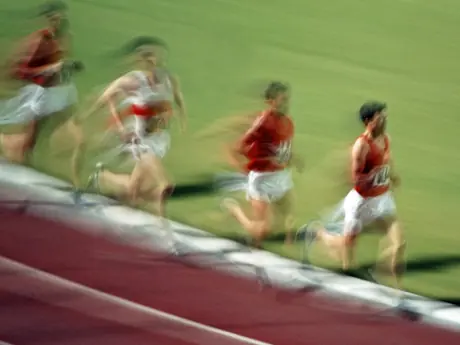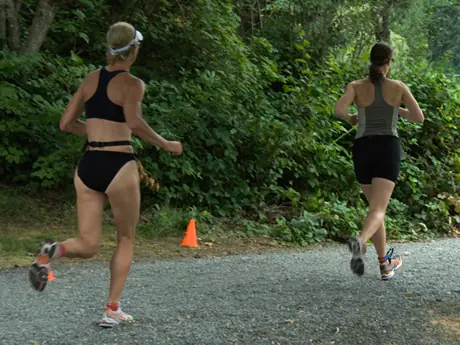
There are two kinds of triathletes: those who don't do high-intensity intervals and those who do them wrong.
OK, that's a generalization, but there is some truth to the statement. Many non-competitive triathletes do all of their swims, rides and runs at more or less the same, moderate intensity. They build fitness for events by adding distance to their workouts, not intensity.
Triathletes who are more interested in getting faster typically do high-intensity intervals in all three disciplines. Yet there's not a lot of variation in their interval workouts. Typically they lean heavily on short intervals performed at very high speeds: 50-yard sprints in the pool, 1-minute hill repetitions on the bike, 400-meter intervals on the track, and so forth.
More: Interval Training Tips for Runners
There's nothing wrong with these workouts, but it's important to also do workouts featuring longer intervals at a slightly lower (but still high) intensity. In fact, if you could do only one or the other, you would get more benefit from intervals lasting 3 to 8 minutes each than you would get from shorter intervals.
To understand why, you need to first understand this: The purpose of high-intensity interval training is not to make you faster. Rather, it's to make you less fatigable when going fast. From your very first day of training, you have all the speed you need to be the best triathlete you can be. What you lack is the ability to sustain high submaximal speeds over long distances. Long intervals do a better job than short intervals of increasing this crucial ability, which is sometimes called intensive endurance.
What matters most in high-intensity interval training for triathletes is not how fast you go but how much time you spend going fast. Naturally, the faster you go in your intervals, the less total time you'll be able to spend going fast before you become fatigued. By keeping your pace in check in high-intensity interval workouts, you can complete longer intervals, and/or a greater number of intervals, and thereby get a bigger boost in intensive endurance.
More: How to Cheat Fatigue
- 1
- of
- 2
About the Author

Get ACTIVE on the Go


Couch to 5K®
The best way to get new runners off the couch and across the finish line of their first 5K.
Available for iOS | Android







Discuss This Article